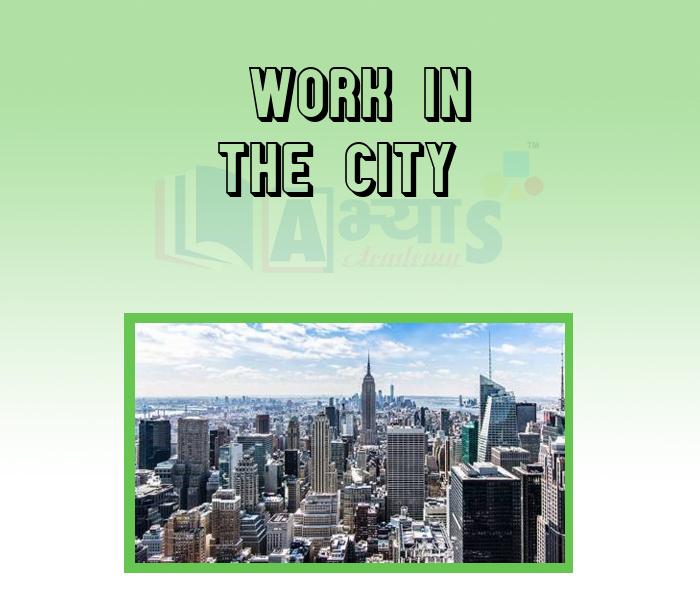Work in the City










Work in the City
Work in the City: After the Maratha defeat in the 1819 Anglo-Maratha War, Bombay became the capital of the Bombay Presidency. It attracted more and more people towards it. With the growth of trade in cotton and opium, large communities of traders and bankers as well as artisans and shopkeepers came to settle in Bombay.
Industrialisation and Migration in Bombay: The first cotton textile mill in Bombay was established in 1854. The establishment of textile mills (by 1921, there were 85 cotton mills with about 146000 workers) also led to a fresh crowd in migration. Large number of people came from nearby district of Ratnagiri to work in the Bombay mills. Women formed 23 per of the mill workforce in between 1919 and 1926. After that, their number dropped steadily due to introduction of new machinery and the induction of more male workers. Bombay dominated the maritime trade of India till the 20th century. It was the junction head of two major railways-Central Western railways. The well connected railways encouraged migration into the city. Natural and man-made disasters like flood, famine, plague epidemic, etc., encouraged higher scale of migration.
Students / Parents Reviews [10]
It has a great methodology. Students here can get analysis to their test quickly.We can learn easily through PPTs and the testing methods are good. We know that where we have to practice

Barkha Arora
10thA marvelous experience with Abhyas. I am glad to share that my ward has achieved more than enough at the Ambala ABHYAS centre. Years have passed on and more and more he has gained. May the centre flourish and develop day by day by the grace of God.

Archit Segal
7thMy experience with Abhyas is very good. I have learnt many things here like vedic maths and reasoning also. Teachers here first take our doubts and then there are assignments to verify our weak points.

Shivam Rana
7thMy experience was very good with Abhyas academy. I am studying here from 6th class and I am satisfied by its results in my life. I improved a lot here ahead of school syllabus.

Ayan Ghosh
8thMy experience with Abhyas academy is very good. I did not think that my every subject coming here will be so strong. The main thing is that the online tests had made me learn here more things.

Hiya Gupta
8thOne of the best institutes to develope a child interest in studies.Provides SST and English knowledge also unlike other institutes. Teachers are co operative and friendly online tests andPPT develope practical knowledge also.

Aman Kumar Shrivastava
10thIt was good as the experience because as we had come here we had been improved in a such envirnment created here.Extra is taught which is beneficial for future.

Eshan Arora
8thBeing a parent, I saw my daughter improvement in her studies by seeing a good result in all day to day compititive exam TMO, NSO, IEO etc and as well as studies. I have got a fruitful result from my daughter.

Prisha Gupta
8thAbhyas Methodology is very good. It is based on according to student and each child manages accordingly to its properly. Methodology has improved the abilities of students to shine them in future.

Manish Kumar
10thAbhyas is a complete education Institute. Here extreme care is taken by teacher with the help of regular exam. Extra classes also conducted by the institute, if the student is weak.
